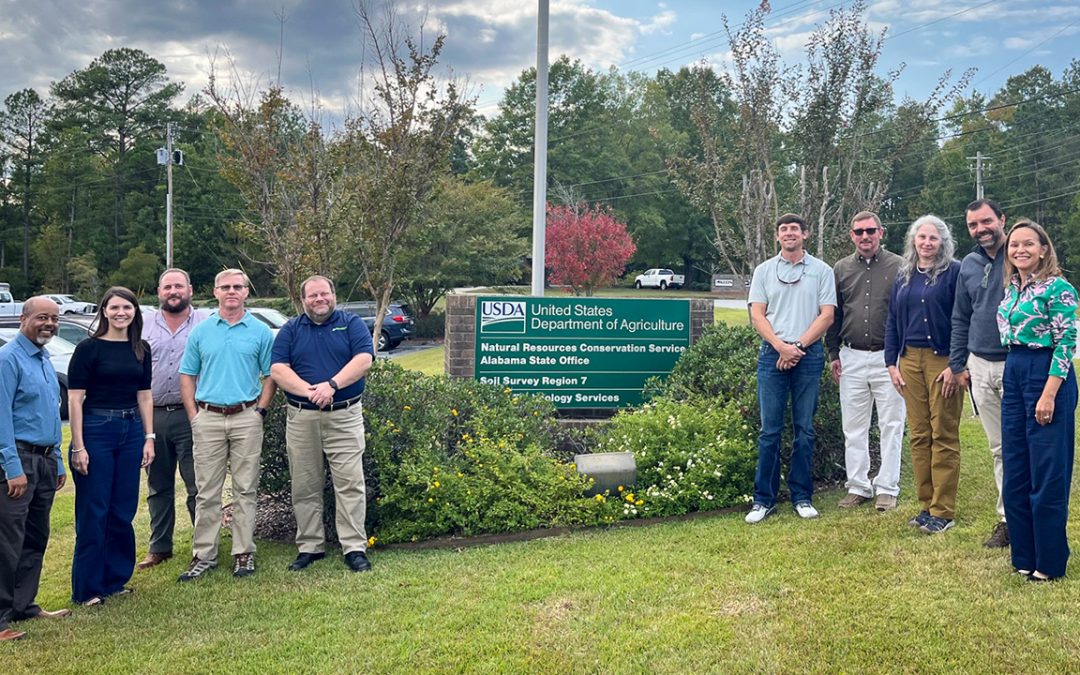AUBURN, Ala.—Agriculture, forestry and their related industries account for 41 percent of Alabama’s $174 billion economy and provide 22 percent of all jobs in the state, a new report from Auburn University’s Department of Agricultural Economics and Rural Sociology shows.
Specifically, the comprehensive analysis, based on 2010 farm data, indicates the industries pump $70.4 billion into the state’s economy and employ 580,295 people.
“We looked beyond the total sales of crops, livestock and timber to encompass the production, processing and distribution of those products,” says Deacue Fields, Auburn ag economist and chief author of the report, “Economic Impacts of Alabama’s Agricultural, Forestry and Related Industries.” “This was a farm-to-table study.”
A year of data gathering, number crunching and fact and figure checking went into the project, which was funded by the College of Agriculture and School of Forestry and Wildlife Sciences at Auburn, the Alabama Cooperative Extension System and the Alabama Agribusiness Council. Alabama Gov. Robert Bentley announced the report’s findings at a February news conference in Montgomery.
College of Agriculture Dean Bill Batchelor says the report demonstrates the importance of agriculture and forestry to the state’s overall economic health.
“We have said for some time that agriculture and forestry constitute Alabama’s largest industry, but the numbers we were using were over a decade old,” Batchelor says. “This report confirms what we have known, that they are a huge section of our economy and that the return on investments in agricultural research, academics and outreach is strong.”
According to the study, timber production and processing lead all farm and forestry sectors in economic impact, generating $21.4 billion and 122,020 jobs, followed by poultry and egg production and processing at $15.1 billion and 86,237 jobs.
In terms of production, Alabama’s other top crops, in order of economic impact, are greenhouse, nursery and floriculture; beef cattle; cotton; and soybean, corn and wheat. The study also examined commodities unique to Alabama’s economy, including peanuts and catfish, and indicated peanut production contributes $211.4 million annually to Alabama’s economy and 2,046 jobs; catfish accounts for $158.2 million and 5,829 jobs.
Regionally, a group of 11 north Alabama counties and another of 19 central Alabama counties contribute $18.5 billion each to the total $70.4 billion, with nine counties in the southwest corner of the state contributing $14.4 billion.
“Economic Impacts of Alabama’s Agricultural, Forestry and Related Industries” is available online and can be downloaded at no cost. Go to https://store.aces.edu and search for ANR-1456.
Fields and colleagues are now finalizing county-by-county agricultural and forestry highlights, including each county’s top three commodities. An interactive website will launch this summer, from which all 67 county reports can be downloaded.
The last study of the ag, forestry and related industries’ economic impact in Alabama was conducted in the 1990s and was more limited in scope, Field said.
“This new report establishes a baseline of data that we can use to monitor and evaluate the industries’ growth and progress in the future,” he said.
Researchers used a professional economic-impact software and data package to capture the connections among agricultural industries and the rest of the state’s economy and analyze their economic impacts. Then they scrutinized the results.
“When we had everything compiled, we spent three weeks making sure every number in this report made sense, vetting them through the National Ag Statistics Service, commodity groups, chemical and fertilizer companies—every industry involved—and if we found discrepancies, we corrected them,” Fields says. “These numbers are completely valid.
“Everybody loves a winner and wants to invest in a winner,” he says. “Agriculture is a very good investment because it’s a winner.”
Batchelor said the report’s findings also offer further evidence that the future is bright for agriculture and, subsequently, for individuals graduating in the field.




